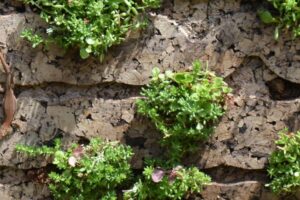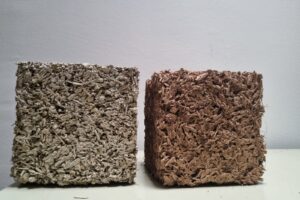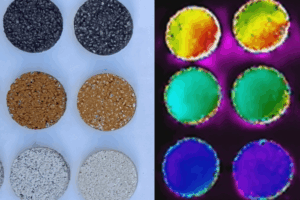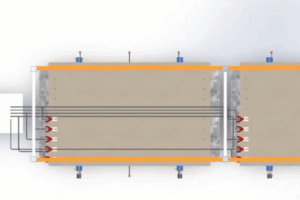
Active control to improve the performance of hydraulic turbines
May 21, 2019
Smart router for energy distribution
May 23, 2019The mixed steel-concrete structures that are used to construct buildings normally develop faults due to separation or slipping between the steel and concrete. That is why a team of researchers led by Miquel Ferrer and Frederic Marimón, from the Research Group in Structures and Mechanics of Materials of the Department of Strength of Materials and Structural Engineering (RMEE), has patented a new system of connection between steel and concrete that consists of generating a repeated series of small, numerous rough projections from the steel element, produced by punching.The aim is to apply the new system, which has been marketed for mixed flagstones, to mixed pillars. The project is designed to show the efficacy and viability of mass production of the system applied to mixed cylindrical pillars to improve the load capacity and the structure’s fire resistance.

All project activities are carried out in collaboration with the project mentor and main potential client of this technology, the R&D and standardization department of ArcelorMittal, Tubular Products Europe in Luxemburg.
The project has been awarded funding in the fourth call of the Knowledge Industry Programme promoted by the Government of Catalonia’s Secretariat for Universities and Research, in the Product phase, designed to obtain prototypes and for the valorization and transfer of research results.
Related Projects
SATE-VEG: A system for energy renovation of buildings that helps reduce the urban heat island effect
Researchers from the Architecture, Energy and Environment (AiEM) group at the Universitat Politècnica de Catalunya - BarcelonaTech (UPC) have developed SATE-VEG, an external thermal insulation system with a vegetal coating that offers seasonally adaptive thermal behaviour, enhances urban biodiversity and promotes positive health effects. The system is made from organic materials, requires low maintenance and consumes minimal water.- A research team from the Interdisciplinary Group on Building Science and Technology (GICITED) at the Universitat Politècnica de Catalunya – BarcelonaTech (UPC) is leading the BioSAFE project, which aims to develop sustainable building envelopes —mainly façades— designed according to sustainability, comfort and safety criteria, with particular attention to their acoustic behaviour and fire performance.
- The Construction Materials and Roads (MATCAR) research group at the Universitat Politècnica de Catalunya - BarcelonaTech (UPC) has carried out the RELUM project with the aim of researching and developing innovative solutions to help prevent global warming, through the design of sustainable pavements with reflective and photoluminescent properties, in collaboration with the company Sorigué.
- The Structural and Materials Technology (ATEM) research group at the Universitat Politècnica de Catalunya - BarcelonaTech (UPC) is participating, in collaboration with the Universitat de les Illes Balears (UIB), in the ReINfoRCed project, which aims to promote the extension of the service life of reinforced concrete structures affected by corrosion.






